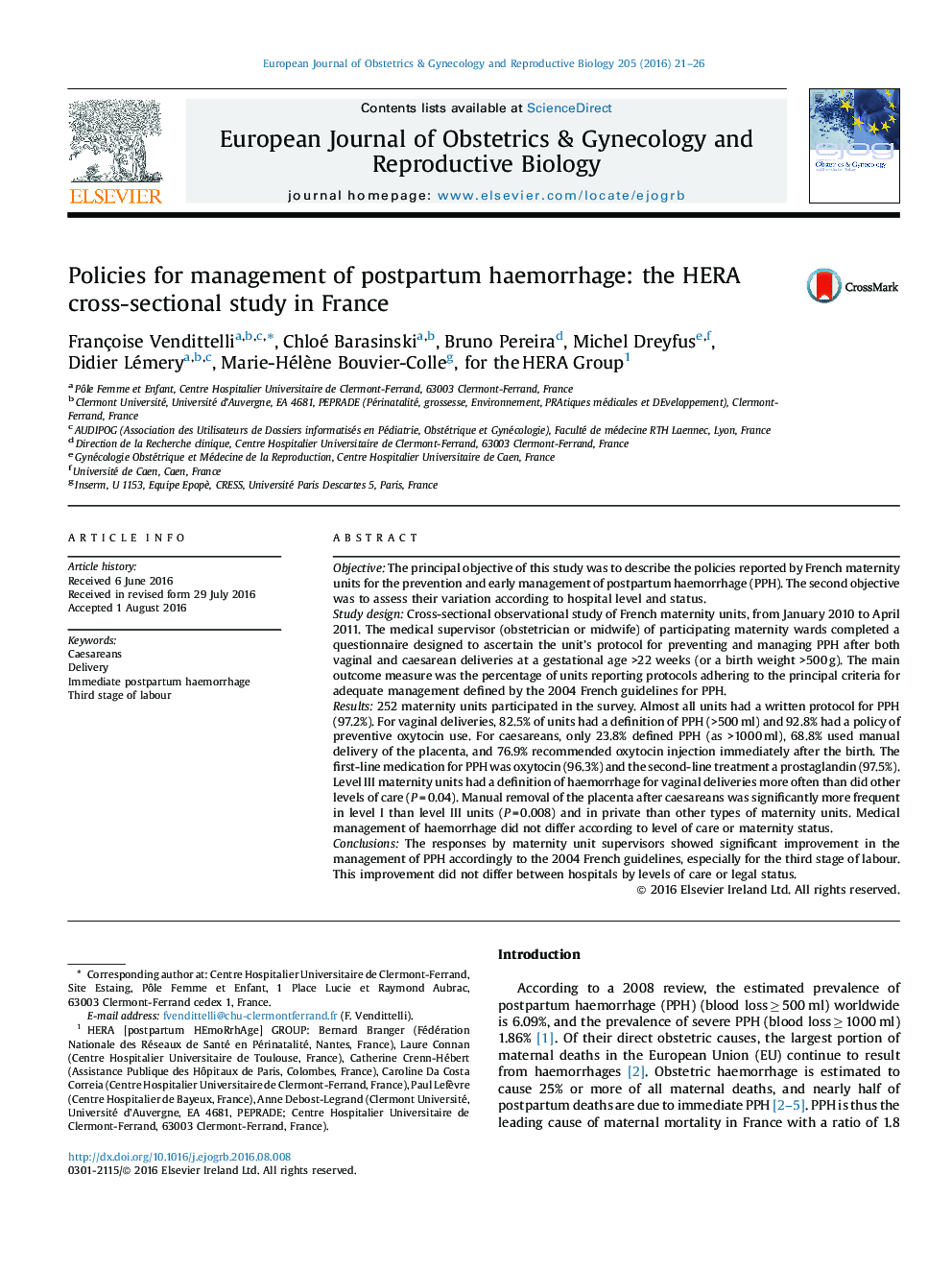| Article ID | Journal | Published Year | Pages | File Type |
|---|---|---|---|---|
| 3919307 | European Journal of Obstetrics & Gynecology and Reproductive Biology | 2016 | 6 Pages |
ObjectiveThe principal objective of this study was to describe the policies reported by French maternity units for the prevention and early management of postpartum haemorrhage (PPH). The second objective was to assess their variation according to hospital level and status.Study designCross-sectional observational study of French maternity units, from January 2010 to April 2011. The medical supervisor (obstetrician or midwife) of participating maternity wards completed a questionnaire designed to ascertain the unit’s protocol for preventing and managing PPH after both vaginal and caesarean deliveries at a gestational age >22 weeks (or a birth weight >500 g). The main outcome measure was the percentage of units reporting protocols adhering to the principal criteria for adequate management defined by the 2004 French guidelines for PPH.Results252 maternity units participated in the survey. Almost all units had a written protocol for PPH (97.2%). For vaginal deliveries, 82.5% of units had a definition of PPH (>500 ml) and 92.8% had a policy of preventive oxytocin use. For caesareans, only 23.8% defined PPH (as >1000 ml), 68.8% used manual delivery of the placenta, and 76.9% recommended oxytocin injection immediately after the birth. The first-line medication for PPH was oxytocin (96.3%) and the second-line treatment a prostaglandin (97.5%). Level III maternity units had a definition of haemorrhage for vaginal deliveries more often than did other levels of care (P = 0.04). Manual removal of the placenta after caesareans was significantly more frequent in level I than level III units (P = 0.008) and in private than other types of maternity units. Medical management of haemorrhage did not differ according to level of care or maternity status.ConclusionsThe responses by maternity unit supervisors showed significant improvement in the management of PPH accordingly to the 2004 French guidelines, especially for the third stage of labour. This improvement did not differ between hospitals by levels of care or legal status.
